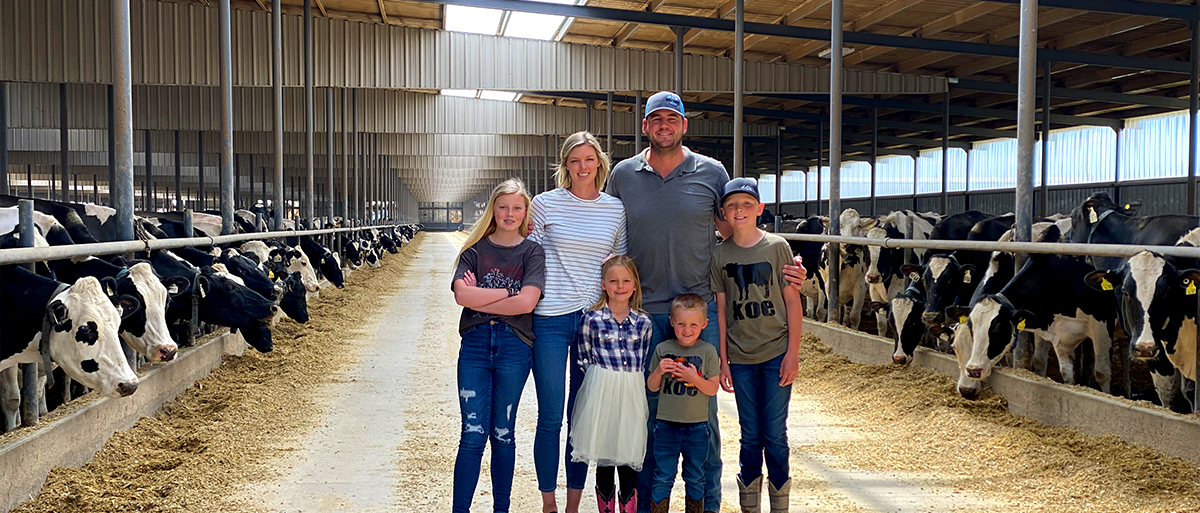On a normal day, over 40 million Americans struggle to provide enough food for their families. The COVID-19 pandemic has amplified this need, with food banks across the country experiencing two to three times the number of people needing assistance. There’s no question that this pandemic has created hardships for our communities, but it’s also reminded us that we’re all in this together.
Families, teachers, frontline workers, the food and beverage industry – we’ve all reached beyond our usual roles to help each other through this. Thankfully, this is not a new concept for farmers, especially dairy farmers, who have continued working 24/7 during this crisis to feed people while caring for their animals and protecting the land. Dairy farmers have a long history of adapting to change, so when schools and restaurants began closing due to COVID-19, dairy farmers in the Dairy MAX region and across the country heard and answered the call to nourish their local communities above and beyond their usual efforts.
When Adrian Diepersloot, a third-generation dairy farmer, heard about the strain local food banks were experiencing, he turned to Weld Food Bank in Greeley, Colorado where a $10,000 donation providing 3,325 pounds of cheese could reach the most people in his area.
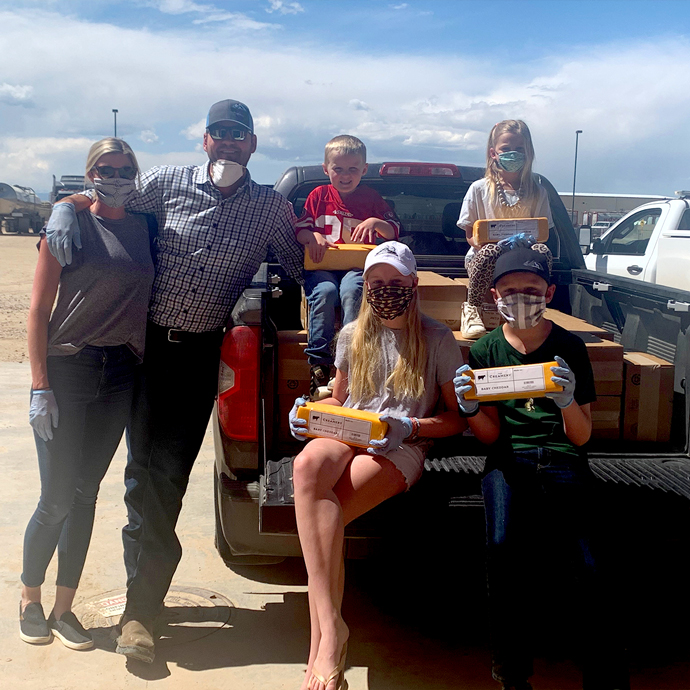
The Diepersloot family - Adrian, Jaclyn, Brooklyn, Cade, Mina and Tyce (Photo Credit: Wolf Creek Dairy
“Our family wanted to give this cheese not only to satisfy an immediate hardship in our community, but also shed light on the fact that dairy farmers will continue to be here for people in need until we cannot anymore,” said Diepersloot.
The entire family spent Good Friday helping load the boxes of cheese into delivery trucks headed for Weld Food Bank. To Diepersloot it was a special moment for his children to experience giving back.
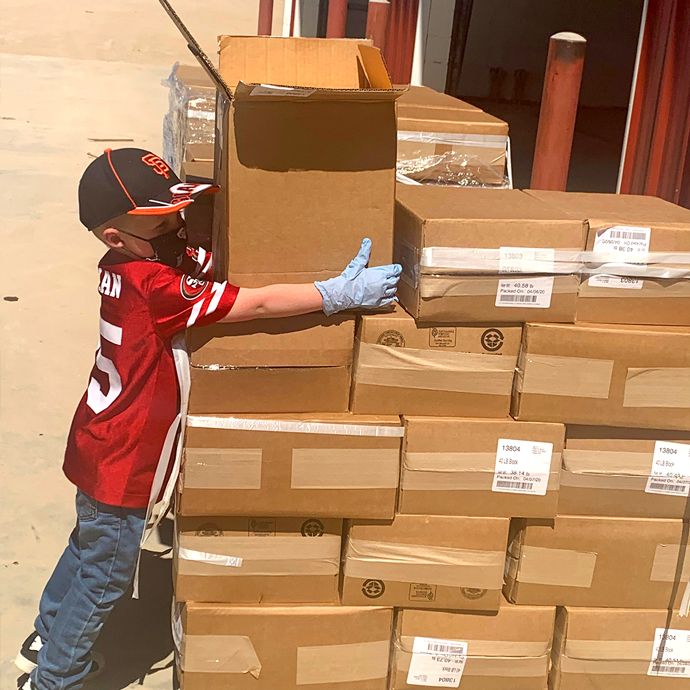
Tyce Diepersloot, 4, loading boxes of cheese (Photo Credit: Wolf Creek Dairy
Weld Food Bank distributes donations to the community through mobile food pantries, senior programs and other avenues. In 2019 alone, 13.6 million pounds of food were distributed. According to Bob O’Connor, executive director of Weld Food Bank, partnering with local farmers helps make this all possible.
“These are incredibly generous donations at such a critical time in our state,” O’Connor said. “Just yesterday morning a mom came into the food bank asking if we had milk for her children. Thanks to local farmers we can now help her and countless others who have children at home for the remainder of the school year.”

Working together was also key when Hutterite dairy farmers of Montana organized a plan to donate 12,000 gallons of milk to Montana Food Bank Network.
When leaders of the Hutterite colonies recognized the need to get milk to their community, it took less than two days for them to convene key partners to help make it happen. Cargill Animal Nutrition offered to cover costs for processing the milk and Meadow Gold Dairy paid for packaging and delivery.
Montana Food Bank Network distributes food across the state, and according to Bill Mathews, chief development officer, they are moving three times the amount of food than normal.
Even before COVID-19, many dairy farm families were already giving back to local food banks and pantries. Tom Alger of A-Tex Dairy in Friona, Texas spends one Tuesday each month volunteering to box food for his local food pantry and donates dairy product when he can. To Ellie Cnossen of Cnossen Dairy in Hereford, Texas, helping feed her community has become a mission after learning about the small amount of milk available through food banks and pantries. Cnossen tries to donate at least 20 gallons each month to her local pantry.
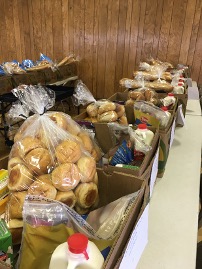
Milk included in food boxes at Friona food pantry (Photo Credit: A-Tex Dairy)
“I don’t like to see hungry people, especially hungry kids,” Alger said. “I get a lot of payback when I see kids have the biggest smile on their face when I hand them the box. And with the gallons of milk I got more smiles and thank you’s than ever before.”
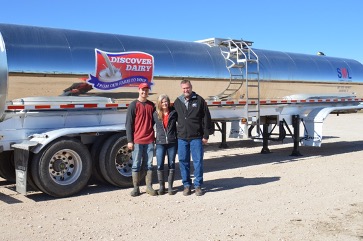
Cord, Ellie and Jim Cnossen (Photo Credit: Cnossen Dairy)
Cnossen also arranged a donation for every student to receive a gallon with their breakfast and lunch meals.
“Most of us don’t worry about when we’re going to eat,” Cnossen said. “If I can make one thing easier for people, I want to do that.”
University students remaining on campus and experiencing job losses during the shutdown are another group in need. At Midwestern State University in Wichita Falls, Texas, milk is the most requested – but least donated -- item at their student food pantry. Jackie Hoegger of Hoegger Brothers Dairy and advertising firm Hoegger Communications jumped at the opportunity to bring local dairy farmers together to give what they could to supply enough milk for the students.
Farmers in this area have donated enough money to supply over 200 gallons, Hoegger says. From $5 to $100, the donations continue to be added to the “milk pile.”
“As much as they are going through right now, they are managing to give,” Hoegger said.
And that is what dairy farmers will continue doing – sustaining their communities for future generations, no matter what comes their way.

